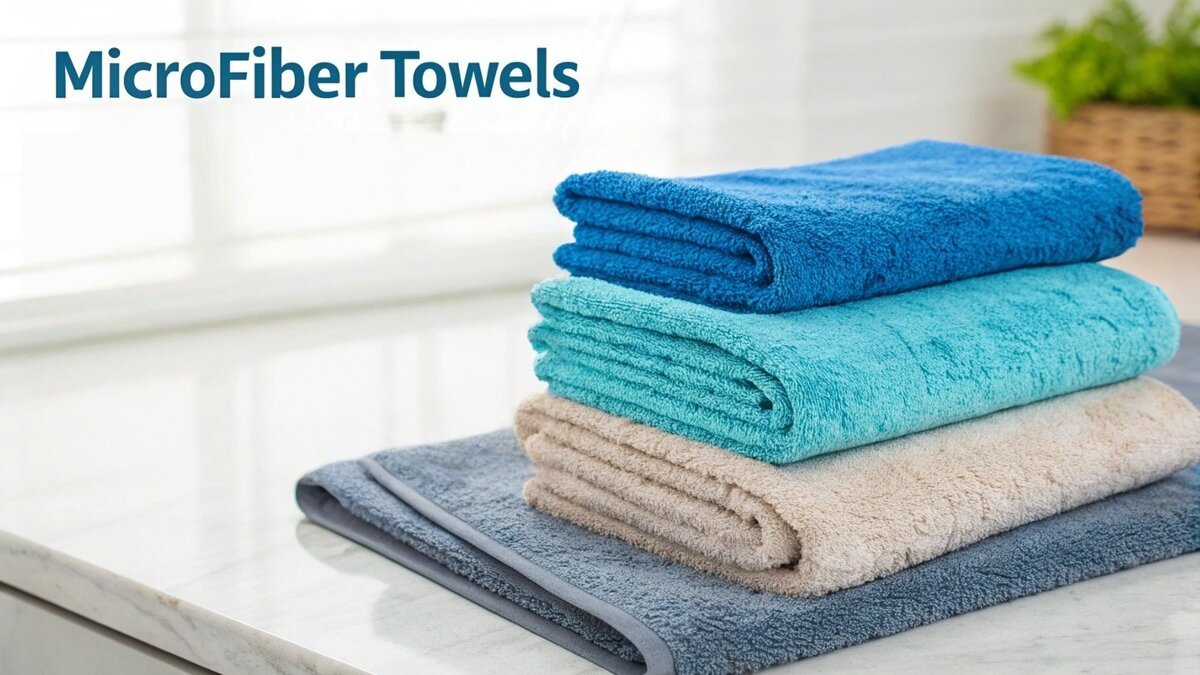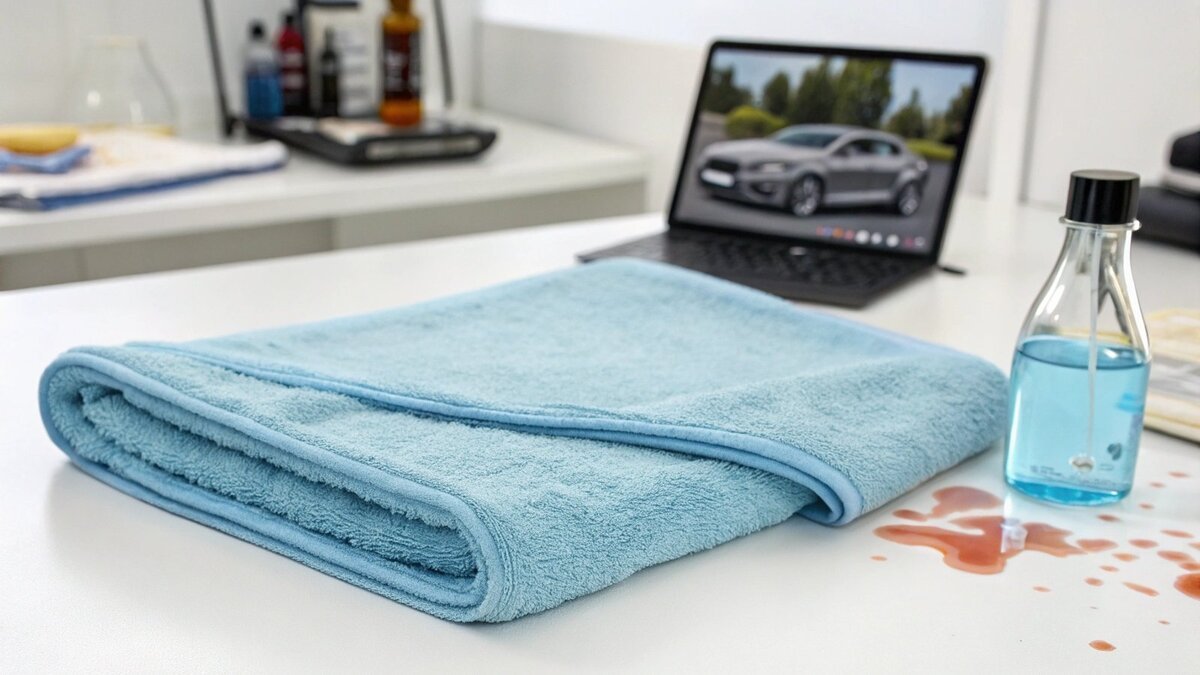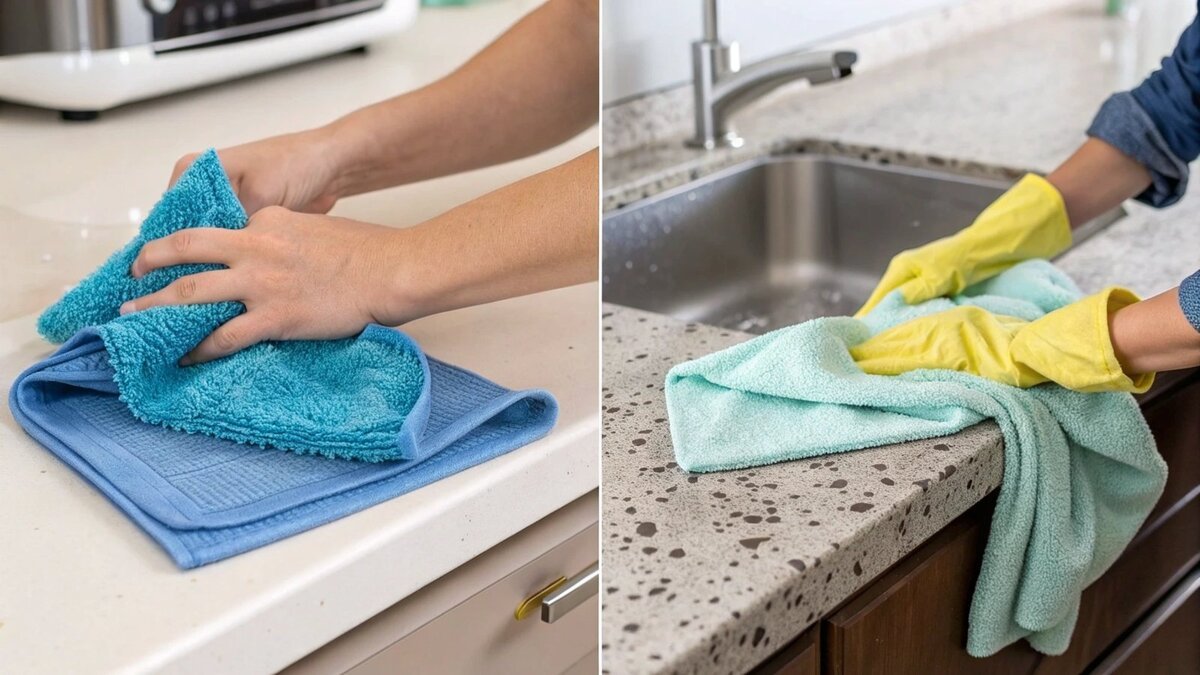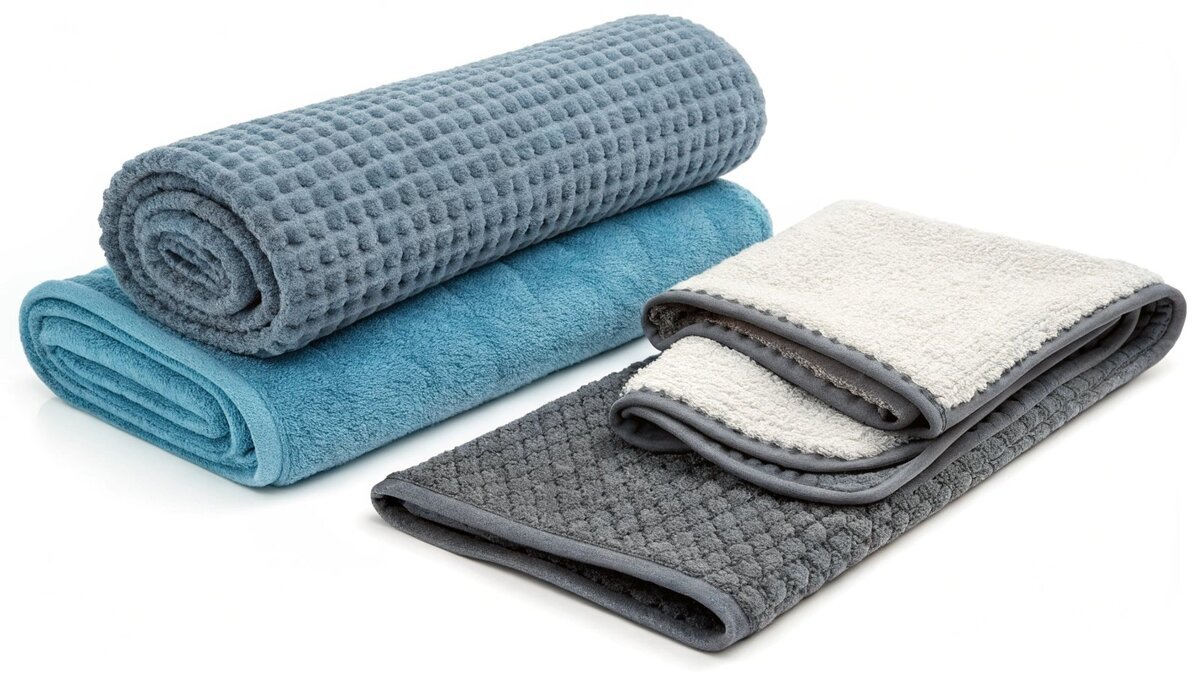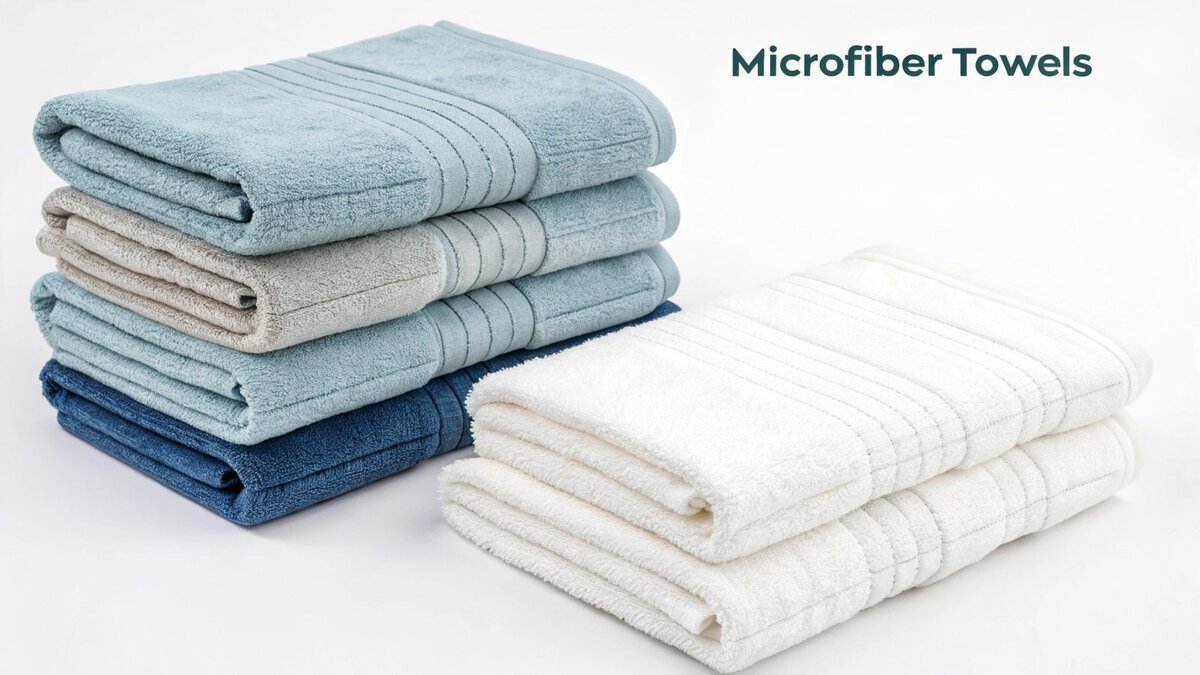Struggling to find one towel that does it all for your business or home? Using the wrong cloths can feel wasteful and ineffective, leaving you with frustrating streaks and lint.
Microfiber towels are incredibly versatile tools used for superior cleaning, drying, and polishing. Their unique, split fibers effectively trap dust, absorb impressive amounts of liquid, and leave surfaces spotless and streak-free, outperforming traditional cotton or paper towels in almost every application.
I’ve spent years in the textile industry, and I’ve seen firsthand how a simple switch to the right towel can transform an entire process, whether it’s for a car detailing business, a hotel chain, or a new fitness brand. The magic of microfiber isn’t just in the material itself, but in knowing exactly how and when to use it to get the best results. Let’s dive into the specifics so you can make confident decisions for your needs.
When should I use a microfiber towel?
Are you unsure which cleaning or drying tasks demand a special towel? Using the wrong cloth can leave behind lint, create frustrating streaks, or even cause micro-scratches on delicate surfaces.
You should use a microfiber towel anytime you need a lint-free, streak-free, and highly absorbent result. It’s the perfect choice for drying cars, cleaning glass and electronics, dusting surfaces, and soaking up spills quickly and completely.
At TowelTrend, we guide brands in choosing towels for very specific jobs. The decision to use microfiber often comes down to performance and protecting the surface it touches. For example, a new car brand we worked with needed a premium towel for their welcome kits. Using a standard cotton cloth would risk leaving swirl marks on new paint. A high-quality microfiber towel was the only answer. The same logic applies across different industries.
Where Microfiber Excels
Microfiber’s structure makes it the ideal choice in many scenarios. Here’s a breakdown of its most popular applications:
- Automotive Detailing: This is where microfiber truly shines. Car enthusiasts and professionals rely on it for everything. Plush, high-pile towels are used for waterless washes and drying because they can absorb many times their weight in water and pull dirt away from the paint to prevent scratching. Thinner, low-pile towels are used for cleaning windows and wiping away polish or wax residue without leaving streaks.
- Hospitality and Commercial Cleaning: Hotels and cleaning services use microfiber to work more efficiently. The cloths can clean surfaces with just water, reducing chemical usage. They trap more dust and bacteria than traditional cloths, leading to a more hygienic environment. Because they are so durable, they withstand the constant washing required in a commercial setting, which is a key factor for purchasing managers.
- Fitness and Sports: Have you ever noticed the towels at your gym? Many are microfiber. They are lightweight, super absorbent for wiping away sweat, and they dry incredibly fast, which helps prevent mildew and odors. We often produce custom-branded microfiber gym towels for fitness chains, starting with a low MOQ of 500 pieces so they can test them out at a new location.
Choosing the right towel means understanding the job. For a simple spill, any microfiber will do. For a high-stakes job like buffing a car or cleaning a hotel suite, the specific type matters.
Do you use a microfiber cloth wet or dry?
Are you confused about whether your microfiber cloth needs water to work? Using it incorrectly can mean you’re not getting the full cleaning power from the fabric, leading to wasted effort.
You can use microfiber cloths both wet and dry, as each method serves a different purpose. Use it dry for dusting and polishing, where its static charge attracts particles. Use it damp with water for general cleaning to lift dirt and grease.
This dual-use capability is what makes microfiber so cost-effective and versatile. I remember a client who was launching an eco-friendly cleaning product line. They wanted to bundle a towel with their solution. We spent time walking them through the science of wet versus dry use so they could put clear instructions on their packaging. Their customers loved it because it helped them reduce their reliance on chemical sprays—they could handle most jobs with just water and the cloth. It all comes down to how the fibers work.
Understanding the Method for the Mission
The effectiveness of a microfiber towel changes based on whether it’s dry or damp. Here’s a simple guide to help you choose the right method.
Using Microfiber Dry
When you use a microfiber towel dry, its split fibers create a positive static charge as you wipe a surface. This static charge acts like a magnet for negatively charged dust and dirt particles. Instead of just pushing dust around like a cotton cloth or feather duster might, it picks it up and holds onto it. This makes it perfect for:
- Dusting furniture, shelves, and electronics.
- Polishing chrome fixtures.
- Buffing a car after applying wax.
- Drying a surface that’s already mostly dry.
Using Microfiber Damp
When you dampen a microfiber towel with water, the static effect is gone. Now, it cleans using capillary action. The tiny spaces between the fibers suck up dirt, grease, and grime. Water helps to break down the dirt, and the fibers pull the residue into the cloth. The best part is that you often don’t need any chemical cleaners. Just water is enough for most everyday cleaning tasks.
Use a damp cloth for:
- Wiping down kitchen counters and appliances.
- Cleaning up spills.
- Scrubbing bathrooms.
- Cleaning windows and mirrors for a streak-free shine.
| Method | Best For | How it Works |
|---|---|---|
| Dry | Dusting, Polishing, Buffing | Fibers create a static charge that attracts and traps dust particles. |
| Damp | General Cleaning, Spills, Grime | Capillary action pulls dirt and liquid into the fibers, often without chemicals. |
For most cleaning, "damp" means wringing out the cloth until it no longer drips. An overly wet cloth won’t be able to absorb as much grime.
What do you use a microfiber towel for?
Think all microfiber towels are created equal? Using a heavy-duty car towel on your eyeglasses or a glass cloth for a big spill will lead to disappointing and ineffective results.
Different microfiber towels are designed for specific uses. Terry-style towels handle general cleaning, waffle-weaves are perfect for streak-free glass drying, and plush, high-pile towels are ideal for safely drying cars. The weave and blend determine the job.
As a manufacturer, this is where my expertise really comes into play. A brand will come to me and say, "We need a microfiber towel." My first question is always, "For what purpose?" A towel designed for drying hair needs to be soft and ultra-absorbent without friction. A towel for cleaning up industrial spills needs to be durable and economical. The construction of the towel—the weave, the pile height, and the blend of polyester and polyamide—is what sets it apart.
Matching the Towel to the Task
Let’s break down the most common types of microfiber towels. Understanding these differences is key, especially for businesses creating a product line. Your customers will notice the difference in performance.
Weave, Pile, and Blend Matter
- Weave: This refers to how the threads are looped, twisted, or woven together. Common weaves include terry, waffle, herringbone, and flat weaves.
- Pile: This is the height of the loops or fibers. A high pile is plush and absorbent (like a detailing towel), while a low pile is better for cleaning without leaving lint (like a glass cloth).
- Blend: This is the ratio of polyester to polyamide. Polyester provides the structure and cleaning power, while polyamide adds absorbency and softness. An 80/20 blend is a common all-purpose choice, while a 70/30 blend offers higher absorbency and softness for premium applications.
Here’s a table that can help guide you. This is the exact kind of information we provide our clients at TowelTrend to ensure they get the perfect towel for their brand.
| Towel Type | Weave / Pile | Primary Use | Why It Works |
|---|---|---|---|
| All-Purpose | Terry Weave (Short Pile) | General cleaning, wiping counters | Durable loops grab and hold onto dirt effectively. |
| Glass & Polishing | Waffle or Flat Weave | Windows, mirrors, chrome, screens | The smooth, tight weave leaves no lint for a perfect streak-free finish. |
| Drying & Detailing | High Pile, Twist Loop | Drying cars, soaking up large spills | Deep, plush fibers absorb huge amounts of water and trap dirt safely. |
| Hair & Sports | Suede or Ultra-Plush | Drying hair quickly, wiping sweat | Very soft and highly absorbent material that doesn’t snag or cause friction. |
When a client wants to launch, say, a new line of baby products, we would recommend an ultra-plush, soft weave with a 70/30 blend for maximum gentleness. That level of detail makes all the difference.
Do you wash and reuse microfiber towels?
Are you throwing out your microfiber towels after just a few uses? That’s like throwing money away and creates unnecessary waste, negating one of the towel’s biggest benefits.
Yes, absolutely! Microfiber towels are designed to be washed and reused hundreds of times. This makes them a highly cost-effective and eco-friendly choice. Proper washing is essential to maintain their unique cleaning ability and extend their lifespan.
One of the biggest pain points for purchasing managers is recurring cost. When I explain that a high-quality microfiber towel can replace hundreds of rolls of paper towels or last far longer than cotton rags, it’s an easy sell. The key, however, is educating the end-user on proper care. We always advise our clients to include simple care instructions on their packaging. It protects the product’s integrity and improves customer satisfaction. A towel that loses its grip after a few washes reflects poorly on the brand, not the user’s laundry habits.
How to Keep Your Microfiber Working Like New
Improper washing is the number one reason a microfiber towel fails. Fabric softeners, high heat, and lint from other fabrics are its worst enemies. They clog the microscopic fibers and ruin the towel’s ability to clean and absorb. Follow these simple steps to ensure a long life for your towels.
Simple Washing Instructions:
- Separate from Other Fabrics: This is the most important rule. Wash microfiber towels only with other microfiber towels. If you wash them with cotton or other fabrics, the lint will get trapped in the fibers and make them far less effective.
- Use a Mild Detergent: Use a small amount of a gentle liquid detergent. Avoid powdered detergents, as they may not dissolve fully and can clog the fibers. Specialized microfiber detergents are available but not always necessary if you follow the other rules.
- No Fabric Softener or Bleach: Fabric softener coats the fibers with a waxy film, completely destroying their static charge and absorbency. Bleach breaks down the synthetic fibers, making them brittle and useless.
- Wash in Warm Water: Use warm, not hot, water. Extremely high heat from a hot water cycle can melt the delicate polyester and polyamide fibers, fusing them together.
- Air Dry or Tumble Dry on Low: The best method is to hang your towels to air dry. If you need to use a dryer, set it to the lowest heat setting or the "air fluff" (no heat) option. Never use dryer sheets for the same reason you avoid fabric softener.
By following these care instructions, you ensure your investment in high-quality microfiber towels pays off for years, not weeks.
Conclusion
Microfiber towels are powerful, versatile tools for cleaning and drying. Knowing which type to use—and how to care for it—unlocks its full, long-lasting value for your home or business.

